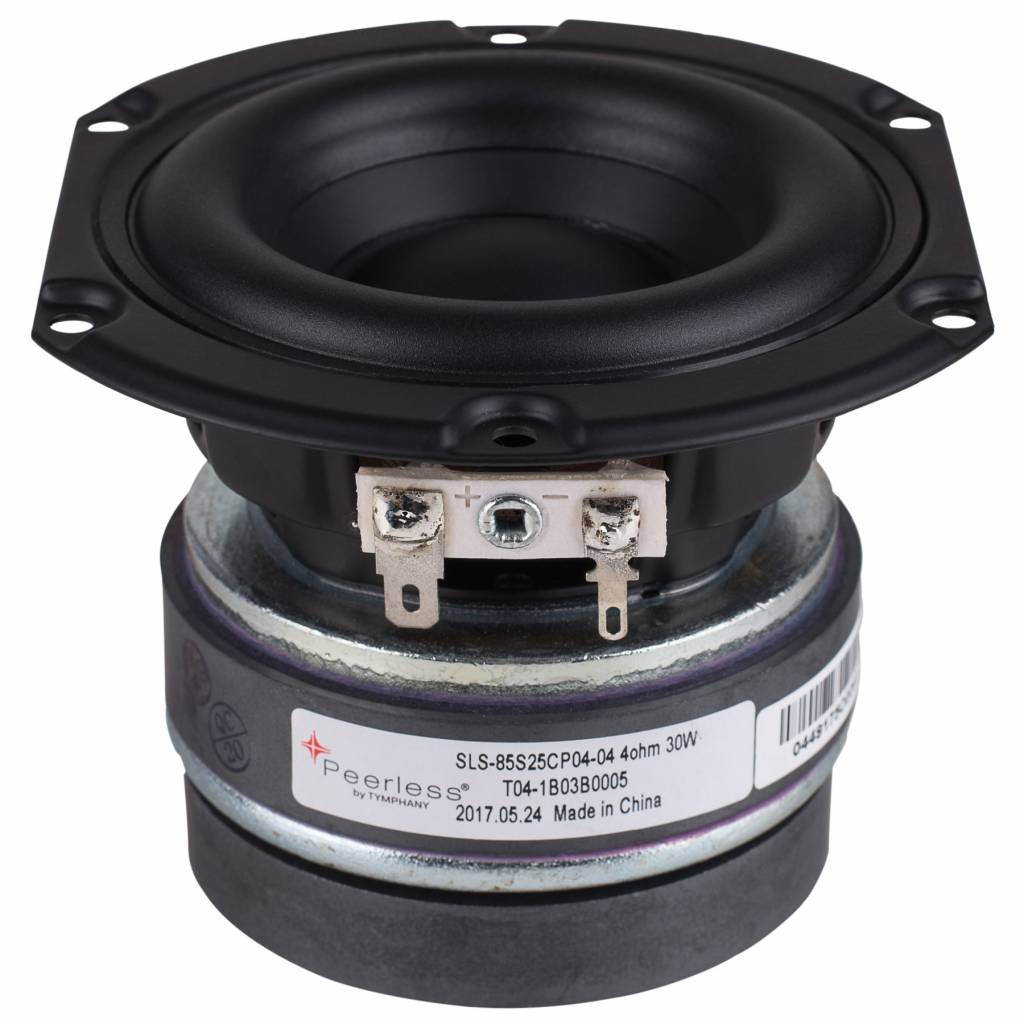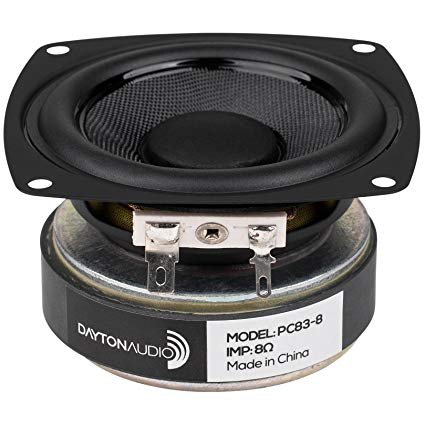Follow along with the video below to see how to install our site as a web app on your home screen.
Note: This feature may not be available in some browsers.
HEY! The datasheet shows a stereo (2 channels) amplifier but the video shows a mono (1 channel) amplifier so something is VERY fishy. Maybe the Chinese amplifier has weak wiring so they paralleled the 2 channels. Doesn't your amplifier have 2 channels?
Just out of curiosity I captured the text off the back of the speaker in the youtube link; it does appear to be the same as your Aliexpress one:
View attachment 124005


The datasheet shows the loudness dropping below 100Hz when it is in a huge enclosure. We can hear sounds down to 20Hz and many bookshelf speakers play good down to 50Hz (one octave lower than the little speaker).
Order Dayton Audio PC83-8 Full-range Woofer
Buy the PC83-8 online at SoundImports ✓ Same day shipping ✓ Low shipping rateswww.soundimports.eu
Those speakers seem mighty fine for their price, whats the catch ? Almost 87dB at 8 ohms and going 80-20.000. 13€. What am i midding ?
Google says 1 in 10,000 people have perfect pitch
